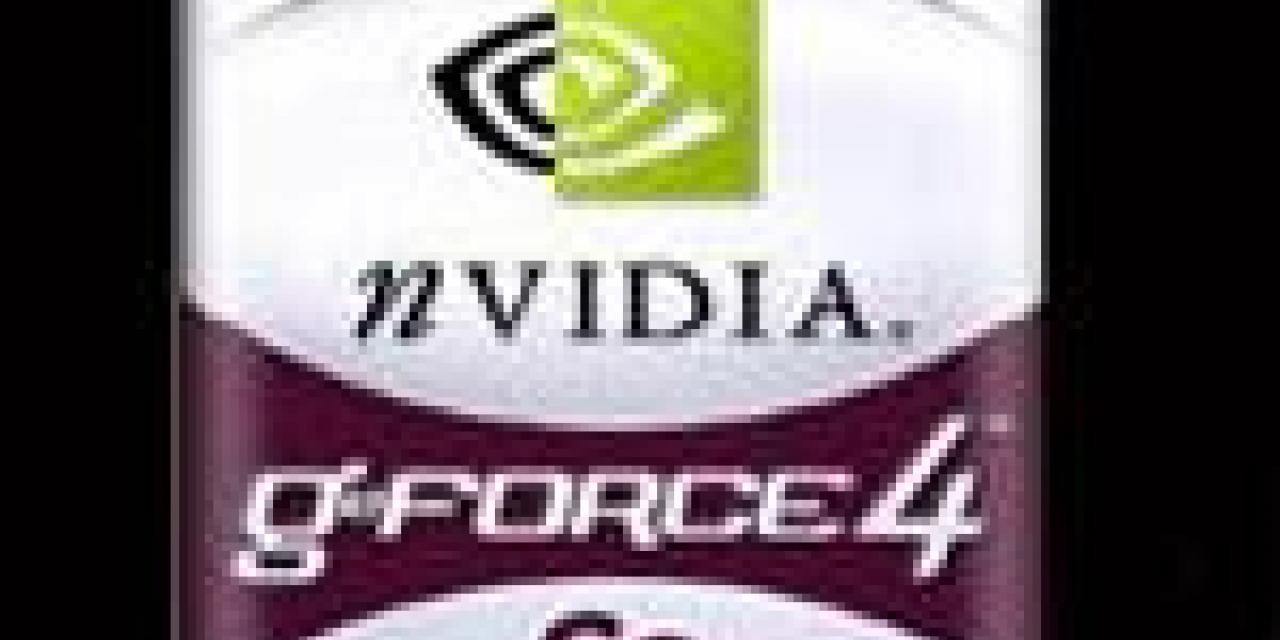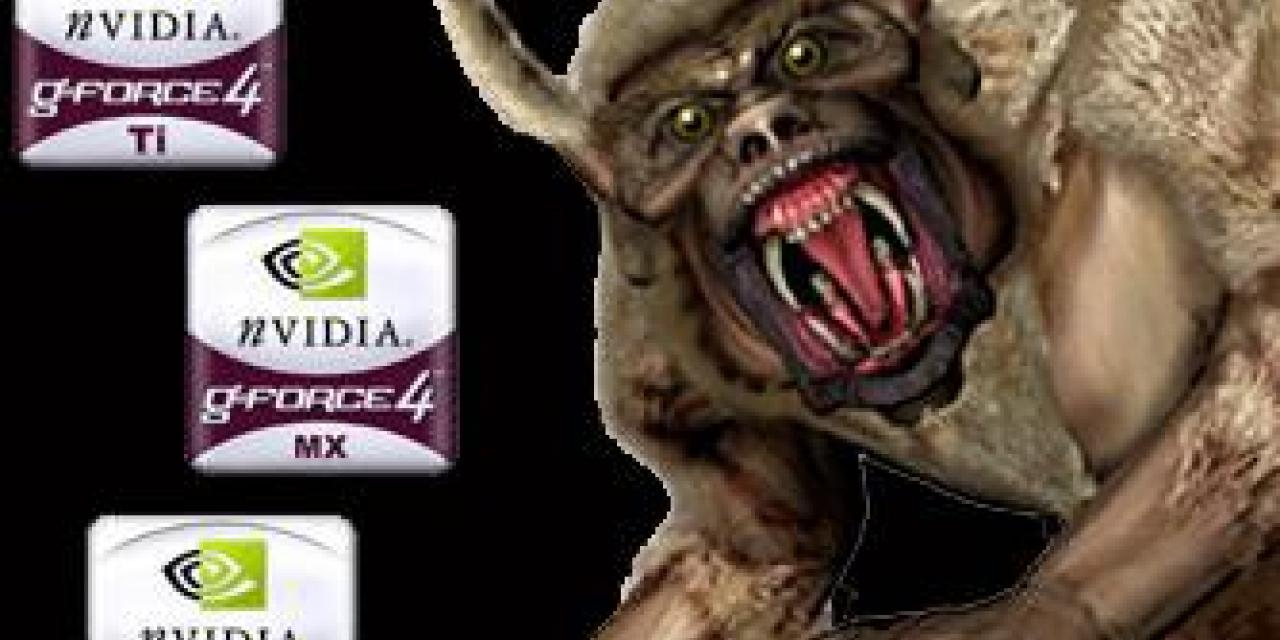


nVidia have decided to show suitors to the graphics throne, exactly who the boss is.
For the first time, since 3DFX was around, nVidia seems worried. That much can be assumed from the extensive attempt to reach all market layers. Gone are the days when a major chip manufacturer could hold off the release of the cheaper models in order to target the hardcore gamers and their big bucks.
So the three GeForce4 boards will be: the GeForce4 Ti 4600 and 4400, the GeForce4 MX 460, 440 and 420, and the mobile GeForce4 440 Go and 420 Go.
The MX's are already shipping in OEM systems, the mobile chips will be available within February and the Ti's will hit stores in about 60 days.
Now if you where an ATI exec and saw that coming at you wouldn't you be running for cover?
nVidia are certainly pulling all the stops and have managed to secure support from all sectors of the industry.
"Video games used to be a kind of step-child to film and live TV," said David DeMartini, Executive Producer for Golfing Simulations at Electronic Arts. "Today, by delivering high-resolution, high frame-rate, full scene antialiasing in a complete family of GPUs, nVidia has provided us with the tools to deliver breakthrough performance and image quality for the gaming industry. This helps Tiger Woods PGA Tour 2002 achieve a level of realism that rivals film and video and gives the player the sense they're in the game."
More support is evident in the overwhelming numbers of PC makers which have included the GeForce4 to their line-up, including Apple, Compaq, Gateway, HP, MicronPC and Toshiba. Board manufacturers include: ASUSTeK, eVGA.com, Gainward, Leadtek, MSI, PNY and Visiontek.
GeForce4 Ti 4600 and 4400
The GeForce4 Ti GPU is the first consumer GPU capable of driving complex geometries and character animations. With its advanced nfiniteFXO Engine, superior Accuview Antialiasing techniques, and flexible nView multidisplay technology, the GeForce4 Ti GPU allows end users to experience radically immersive graphical environments, complete with unique visual effects and the most realistic, life-like images ever.
GeForce4 MX 460, 440 and 420 The GeForce4 MX GPU brings new levels of graphics performance and display flexibility to the mainstream desktop PC. By incorporating NVIDIA's innovative nView multidisplay technology, highly efficient Lightspeed Memory Architecture (LMA) II and advanced Accuview Antialiasing techniques, the GeForce4 MX GPU is the most feature-rich, cost-effective, highly integrated GPU available for the mainstream market.
GeForce4 440 Go and 420 Go The mobile GeForce4 GPUs integrate innovative power management techniques for unsurpassed battery life, a Video Processing Engine and revolutionary antialiasing technology for superior display quality, and an ultra efficient memory architecture for the fastest computing experience ever realized on a mobile PC platform.
You can have a look at a comparison of the numbers of a GeForce4 with ATI's RADEON 8500 by following the link below and to the right...
These figures show a basic comparison of numbers between the GeForce's and the RADEON 8500's. They are not meant to provide any conclusion since many other factors affect card performance. Most of the figures mentioned here are theoretical peak values, which may never be reached or utilised by the system.
This comparison will seem unfair to most ATI fans since the direct ATI competition to the GeForce4 is not yet available. It is however, a fair description of what will be available for purchase in the next 60 days.
Card________________Core clock(MHz)
GeForce4 MX 460______300
GeForce4 Ti 4600______300
Radeon 8500__________275
Card________________Pixel pipelines
GeForce4 MX 460________2
GeForce4 Ti 4600________4
Radeon 8500____________4
Card________________Peak fill rate (Mpixels/s)
GeForce4 MX 460__________ 600
GeForce4 Ti 4600__________1200
Radeon 8500______________1100
Cards_______________Texture units per pixel pipeline
GeForce4 MX 460_____________2
GeForce4 Ti 4600_____________2
Radeon 8500_________________2
Cards_______________Peak fill rate (Mtexels/s)
GeForce4 MX 460____________1200
GeForce4 Ti 4600____________2400
Radeon 8500________________2200
Card________________Memory clock (MHz)
GeForce4 MX 460__________550
GeForce4 Ti 4600__________650
Radeon 8500______________550
Cards_______________Memory bus width (bits)
GeForce4 MX 460____________128
GeForce4 Ti 4600____________128
Radeon 8500________________128
Cards_______________Peak memory bandwidth (GB/s)
GeForce4 MX 460___________ 8.8
GeForce4 Ti 4600___________10.4
Radeon 8500_______________ 8.8
